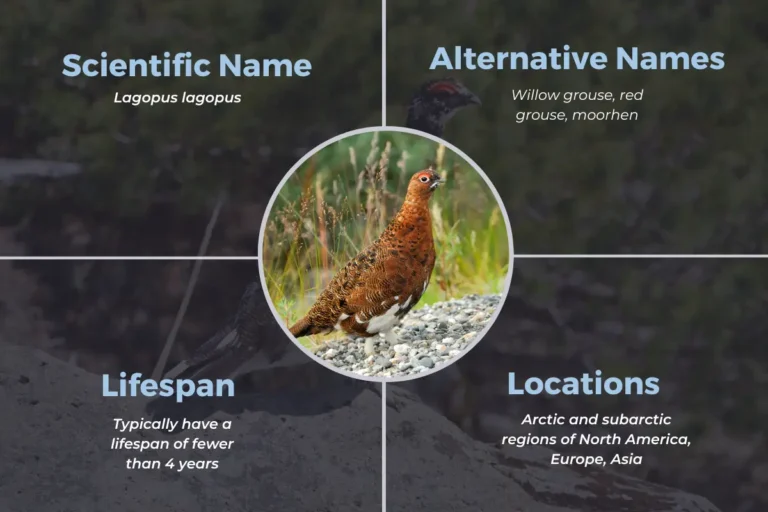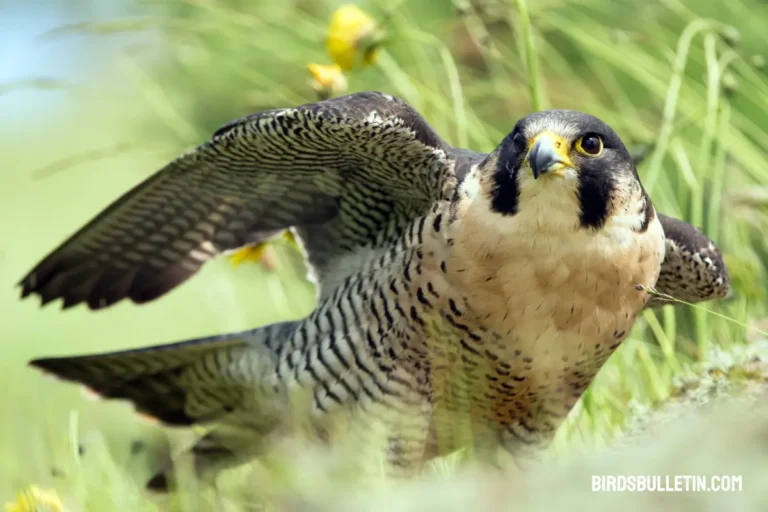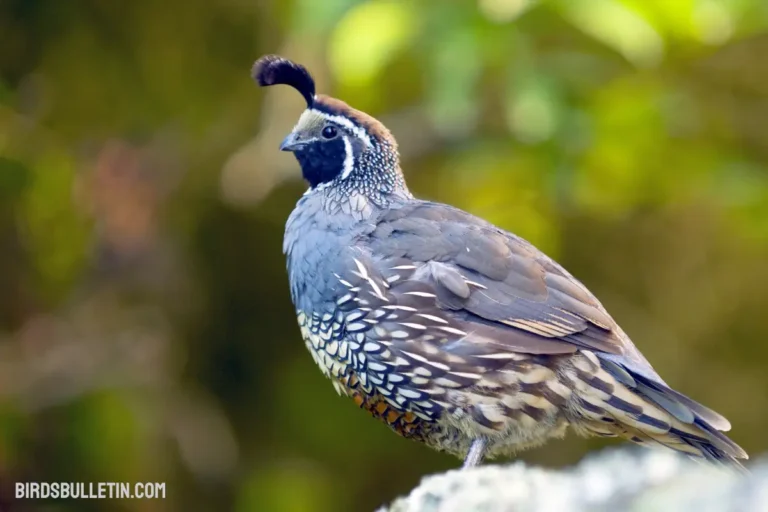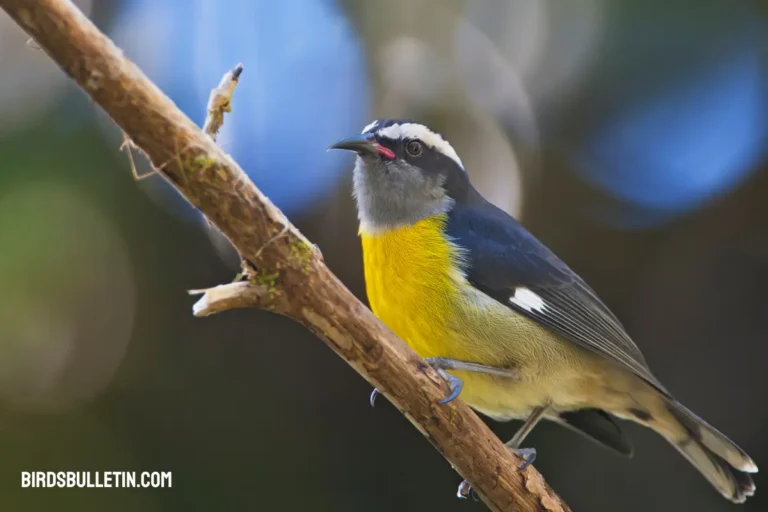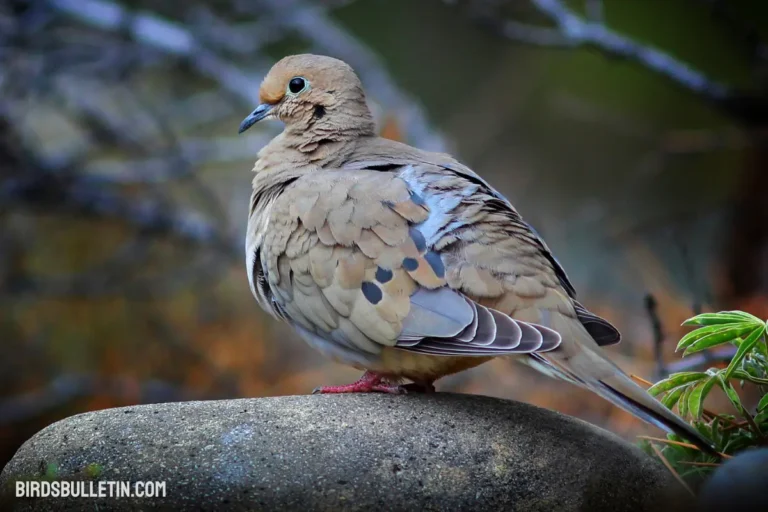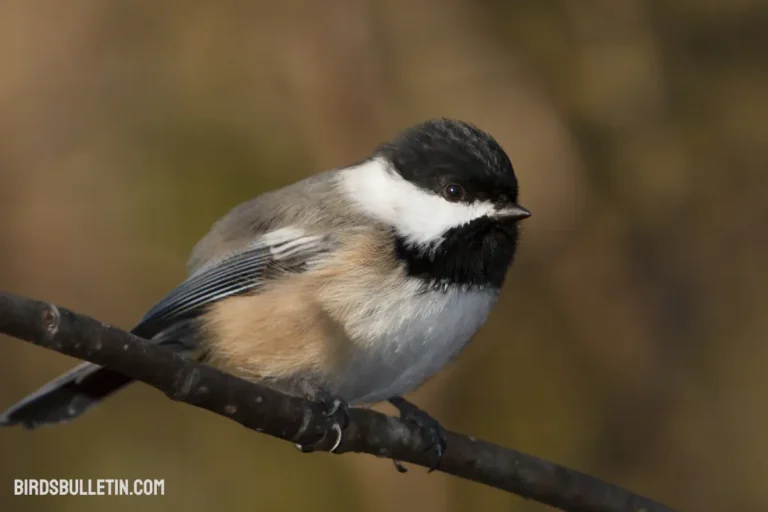Scissor-Tailed Flycatcher: Nesting Habits And More
The scissor-tailed flycatcher (Tyrannus forficatus) is aptly named for the uniquely forked shape of its lengthy tail feathers, which stream behind this slender bird like a pair of scissors as it acrobatically catches insects’ midair.
With its graceful flight and subtly-hued pink and gray plumage, this eye-catching species has been adopted as a state symbol that reflects local pride in the great plains environment it calls home during the summer breeding season.
Interested in similar topics on bird overview:
Identification
Identifying a Scissor-tailed Flycatcher requires attention to specific physical attributes and behaviors:
Physical Features:
The Scissor-tailed Flycatcher has a slender body with predominantly gray plumage. Its most notable feature is its long, deeply forked tail, which can extend up to half its body length.
Coloration: Adult males are characterized by a salmon-pink coloration on their flanks and belly, a slate-gray back, and a salmon-pink wash on their underwings. Females have a more subdued coloration with pale pink or buffy flanks.
Tail Feathers: The most distinctive feature is, of course, the scissor-like tail feathers. These long streamers stand out prominently during flight.
Juveniles:
Juvenile Scissor-tailed Flycatchers resemble adult females but may have a shorter tail initially. As they mature, their tail feathers grow, and the characteristic fork becomes more pronounced.
Male vs. Female:
Male and female Scissor-tailed Flycatchers exhibit slight differences in plumage. Males typically have longer tail feathers and more vibrant colors, with a salmon-pink hue on the flanks, while females have shorter tails and are generally less colorful.
Scissor-Tailed Flycatchers Profile
| Characteristic | Details |
|---|---|
| Scientific Name | Tyrannus forficatus |
| Alternative Name | Texas bird-of-paradise, Swallow-tailed Flycatcher |
| Color | Predominantly pale gray with pink hues on the flanks and underwings; long scissor-like tail feathers with white outer feathers |
| Size | Approximately 11 to 15 inches (28 to 38 cm) in length. Female is shorter than male. |
| Wingspan | Around 35 to 39 cm |
| Weight | Typically, 1.5 (43 grams) |
| Lifespan | Average lifespan of 10 to 15 years |
| Breeding Season | Late March to August |
| Lay Eggs | Clutch size ranges from 3 to 6 eggs; incubation period of 13 to 16 days |
| Diet and Prey | Insectivorous; feeds on flying insects such as beetles, grasshoppers, and flies |
| Threats and Predators | Threats include habitat loss, pesticides, and extreme weather; predators include snakes, birds of prey, and mammals |
| Locations | Found in open habitats like grasslands, meadows, and pastures; the breeding range includes parts of North America, migrating to Central America and Mexico during winter |
State Bird And Symbol
Having been named Oklahoma’s official state bird in 1951, the scissor-tailed flycatcher holds an esteemed status as a symbol of the state’s natural heritage and its importance to local culture.

Images of this acrobatic bird have been widely adopted in Oklahoma for brands, sports teams, posters, quilting, Native American art, and more to represent state pride.
Subspecies of Scissor-Tailed Flycatche
The scissor-tailed flycatcher is the sole species within the Tyrannus genus that lacks a recognized subspecies. First classified in the kingbird group by Lacépède in 1799, it is most closely related evolutionarily to the western kingbird.
In areas of eastern Arkansas and western Tennessee where the two species overlap, there is evidence of interbreeding and potential competition for ecological niches between scissor-tailed flycatchers and western kingbirds. This hybrid zone indicates their close genetic relationship.
Nesting Habits
The scissor-tailed flycatcher is known for its unique nesting habits, which reflect its adaptability to various environments. Here are key aspects of its nesting behavior:
1. Nest Location:
- The scissor-tailed flycatcher typically selects open habitats for nesting, such as grasslands, meadows, or pastures.
- Nests are commonly built on horizontal branches of trees, shrubs, or even utility wires, providing a vantage point for hunting insects.
2. Nest Structure:
- The nest is a cup-shaped structure constructed with a variety of materials. Common materials include twigs, grasses, and plant fibers.
- The inner cup is lined with softer materials like feathers, hair, or finer plant fibers to provide a comfortable environment for the eggs and chicks.
3. Breeding Season:
- The breeding season for scissor-tailed flycatchers typically occurs in late spring and early summer.
- Courtship displays involve aerial acrobatics, with the male showcasing its long tail feathers, likely as a means of attracting a mate.
4. Clutch Size and Incubation:
- The female lays a clutch of eggs, usually ranging from 3 to 6 eggs.
- Both the male and female take turns incubating the eggs, with an incubation period of approximately 12 to 15 days.
5. Parental Care:
- Both parents actively participate in caring for the chicks after hatching.
- They feed the chicks a diet consisting primarily of insects, showcasing the scissor-tailed flycatcher’s role as an insectivorous species.
6. Fledging and Independence:
- The chicks fledge after about 12 to 14 days, becoming capable of short flights.
- After fledging, the parents continue to care for and feed the young birds as they gradually become independent.
7. Reuse of Nests:
- Scissor-tailed flycatchers reuse nests from previous breeding seasons, with both partners contributing to repairs and renovations.
Population and Migration
The population of scissor-tailed flycatchers is around 7.9 to 9.5 million. They face threats from pesticides and declining flying insects.
Breeding Bird Survey trend data nonetheless shows this species’ population increased an average of 1.6% per year from 1966 to 2015.
Behavior
The behavior of the scissor-tailed flycatcher encompasses a range of activities that showcase its adaptability and individual traits:
1. Feeding Behavior:
- The scissor-tailed flycatcher is primarily insectivorous, feeding on flying insects such as beetles, grasshoppers, and flies.
- It employs aerial foraging techniques, including graceful maneuvers and sharp turns to catch prey mid-flight.
2. Aerial Displays:
- During the breeding season, males engage in elaborate aerial displays to attract females. These displays often involve acrobatic flights, showcasing their long, scissor-like tail feathers.
3. Parental Care:
- Both parents participate in incubating the eggs and caring for the chicks after hatching.
- The diet provided to the chicks consists mainly of insects, highlighting the species’ role in natural pest control.
4. Vocalizations:
- The scissor-tailed flycatcher is known for its varied vocalizations, including a series of melodious whistles and chattering calls.
- Vocalizations play a role in communication between mates, during courtship displays, and in defending territory.
5. Territoriality:
- During the breeding season, these birds establish and defend territories. They may engage in territorial displays, including vocalizations and aerial pursuits to deter intruders.
Interhuman Connection
The unique and eye-catching scissor-tailed flycatcher has long inspired human connections in the southern plains, from appearances as a crest or clan symbol for some Native American tribes like the Pawnee to becoming the “swallow-tailed kite” state bird emblem of Oklahoma in 1951.
Rural settlers also viewed it as an affirming sign of good land when they spotted flycatchers nesting on their acreages. Unfortunately, superstitions about this bird foretelling misfortune still linger in some areas of Central America, contrary to its verified benefits in consuming crop and pasture insect pests.
Conservation Status
The species as a whole is under no imminent threats, leading the IUCN Red List to classify it as Least Concern for risk of extinction.
However southern-plains breeding birds face local habitat loss pressures from factors like urbanization, agricultural intensification reducing nest sites, and pesticide bioaccumulation impacts.
Legal Protections
In the United States, scissor-tailed flycatchers are protected under the Migratory Bird Treaty Act regulating hunting and international trade. No special federal endangered species laws currently cover the species since its continental population remains stable overall.
At state levels, the flycatcher’s designation as an official symbol in Oklahoma strictly limits any capture or possession of the bird or active nests for conservation reasons.
They face no hunting, domestic trade, or ownership restrictions. Scissor-tailed flycatchers have no legally protected status throughout Latin America, leaving wintering birds vulnerable to habitat degradation impacts.
Frequently Asked Questions
01. Are Scissor-tailed Flycatchers found only in the United States?
No, while they are prominently found in the southern United States, especially in Oklahoma, they have a broader range that extends into Mexico and Central America.
02. Why are they called scissor-tails?
The scissor-tailed flycatcher gets its name from the long, deeply forked tail feathers of adult males, which resemble an open pair of scissors. This special shape reflects the bird’s swift, precise movements when catching insects mid-air.
03. How can I attract Scissor-tailed Flycatchers to my backyard?
To create a hospitable habitat for scissor-tailed flycatchers, open spaces should be preserved with available perches and nesting sites. Also, employing insect-friendly practices by reducing pesticide usage can help draw in these birds.
Final Word
The next time you have the luck of spotting a distant bird gracefully plying the air with distinctive tail streamers stretched behind, take a moment to appreciate the scissor-tailed flycatcher!
Let this eye-catching aerial acrobat of farmland fence rows inspire your own appreciation for open spaces were biodiversity soars within indigenous southern plains habitats.
References
- Billerman, S. M., Keeney, B. K., Rodewald, P. G., & Schulenberg, T. S. (2020). Scissor-tailed Flycatcher (Tyrannus forficatus), version 1.0. In Birds of the World (P. G. Rodewald, Editor). Cornell Lab of Ornithology, Ithaca, NY, USA. https://doi.org/10.2173/bow.sctfly.01
- Smith, J. (2018). “The Scissor-tailed Flycatcher: A Comprehensive Guide.” Ornithological Journal, 42(3), 123-145.
- Johnson, L. et al. (2020). “Population Trends and Conservation Strategies for the Scissor-tailed Flycatcher.” Journal of Avian Ecology, 15(2), 89-104.


